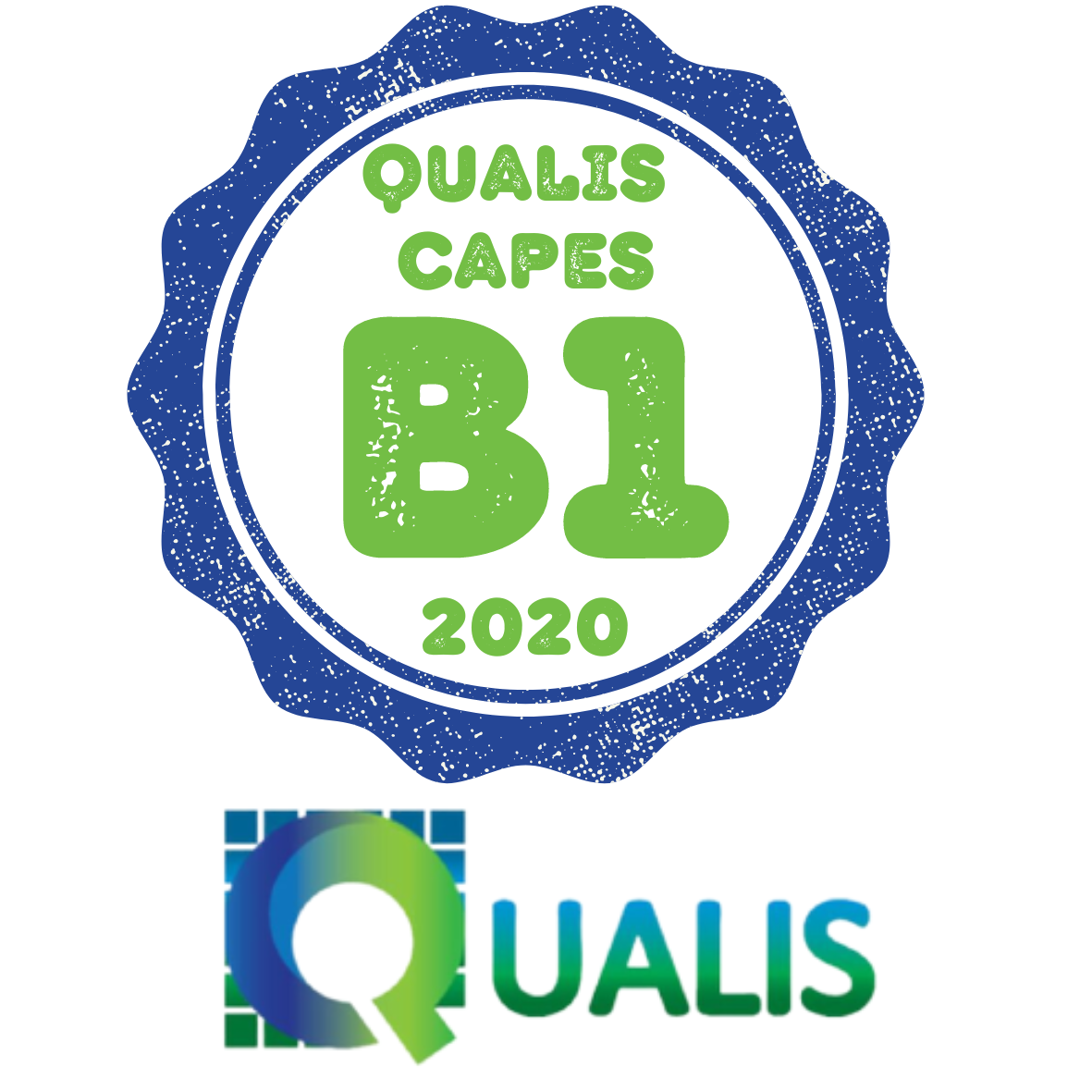EVIDENCIA DE LA ESTRUCTURA INTERNA DE LA ESCALA DE DEPENDENCIA DEL EJERCICIO (EDS-R) EN LA POBLACIÓN ANCIANA
DOI:
https://doi.org/10.22289/2446-922X.V9N2A21Palabras clave:
Anciano, Escala de Evaluación de la Conducta, PsicometríaResumen
Los ejercicios físicos son prácticas beneficiosas para la salud y el envejecimiento activo, pero la práctica excesiva, caracterizada como dependencia del ejercicio, puede tener efectos nocivos para la salud de quienes lo practican. La dependencia del ejercicio se produce cuando el individuo prioriza la práctica sistemática de ejercicios, de cualquier naturaleza, en detrimento de otras actividades diarias. Uno de los desafíos es medir esta dependencia del ejercicio. Por tanto, el objetivo del estudio es buscar evidencia de validez de la Escala de Dependencia del Ejercicio (EDS-R) para la población anciana. Participaron del estudio 87 personas mayores (edad media = 65,89; DE = 4,79 años). El reclutamiento de personas mayores se realizó a través de redes sociales y el instrumento se aplicó online. Para evidencia de estructura interna, se utilizó el Análisis Factorial Confirmatorio con un estimador de Máxima Verosimilitud. La confiabilidad fue hecha por alfa y omega. Los resultados muestran la adecuación de la estructura factorial con cargas factoriales que oscilan entre 0,51 y 0,91, con valores predictivos de los ítems que oscilan entre 0,26 y 0,83. Fiabilidad adecuada con alfa = 0,90 y omega = 0,91. Los resultados apuntaron a evidencia de validez de la estructura interna del EDS-R y la viabilidad de su uso para los ancianos.
Descargas
Citas
Alcaraz-Ibáñez, M., Sicilia, Á., Dumitru, D. C., Paterna, A., & Griffiths, M. D. (2019). Examining the relationship between fitness-related self-conscious emotions, disordered eating symptoms, and morbid exercise behavior: An exploratory study. Journal of Behavioral Addictions, 8(3), 603–612. https://doi.org/10.1556/2006.8.2019.43
Alchieri, J. C., Gouveia, V. V., Oliveira, I. C. V. de, Medeiros, E. D. de, Grangeiro, A. S. de M., & Silva, C. F. de L. S. da. (2015). Exercise Dependence Scale: adaptação e evidências de validade e precisão. Jornal Brasileiro de Psiquiatria, 64(4), 280–287. https://doi.org/10.1590/0047-2085000000090
Allegre, B., & Therme, P. (2008). Étude confirmative de l’échelle de dépendance à l’activité physique Exercise Dependence Scale-Revised pour une population francophone. L’Encéphale, 34(5), 490–495. https://doi.org/10.1016/j.encep.2007.08.004
Borsboom, D., & Mellenbergh, G. J. (2007). Test validity in cognitive assessment. Cognitive diagnostic assessment for education: Theory and applications, 85-115. https://doi.org/10.1017/CBO9780511611186.004
Brosof, L. C., Williams, B. M., & Levinson, C. A. (2020). Exploring the contribution of exercise dependence to eating disorder symptoms. International Journal of Eating Disorders, 53(1), 123–127. https://doi.org/10.1002/eat.23156
Carvalho, L., & Rebustini, F. (2023). Running and active aging: a mixed study on the reasons for practice, lifestyle and performance: Corrida e envelhecimento ativo: um estudo misto sobre os motivos de prática, estilo de vida e desempenho. Concilium, 23. DOI: 10.53660/CLM-2012-23N67
Cepellos, V. M. (2021). Feminização do envelhecimento: um fenômeno multifacetado muito além dos números. Revista de Administração de Empresas, 61(2). https://doi.org/10.1590/s0034-759020210208
Cordes, T., Bischoff, L. L., Schoene, D., Schott, N., Voelcker-Rehage, C., Meixner, C., Appelles, L.-M., Bebenek, M., Berwinkel, A., Hildebrand, C., Jöllenbeck, T., Johnen, B., Kemmler, W., Klotzbier, T., Korbus, H., Rudisch, J., Vogt, L., Weigelt, M., Wittelsberger, R., … Wollesen, B. (2019). A multicomponent exercise intervention to improve physical functioning, cognition and psychosocial well-being in elderly nursing home residents: a study protocol of a randomized controlled trial in the PROCARE (prevention and occupational health in long-term care) project. BMC Geriatrics, 19(1), 369. https://doi.org/10.1186/s12877-019-1386-6
Cronbach, L.J. Coefficient alpha and the internal structure of tests. Psychometrika 16, 297–334 (1951). https://doi.org/10.1007/BF02310555
Costa, S., Cuzzocrea, F., Hausenblas, H. A., Larcan, R., & Oliva, P. (2012). Psychometric examination and factorial validity of the Exercise Dependence Scale-Revised in Italian exercisers. Journal of Behavioral Addictions, 1(4), 186–190. https://doi.org/10.1556/JBA.1.2012.009
Downs, D. S., Hausenblas, H. A., & Nigg, C. R. (2004). Factorial Validity and Psychometric Examination of the Exercise Dependence Scale-Revised. Measurement in Physical Education and Exercise Science, 8(4), 183–201. https://doi.org/10.1207/s15327841mpee0804_1
Dunn, T. J., Baguley, T., & Brunsden, V. (2014). From alpha to omega: a practical solution to the pervasive problem of internal consistency estimation. British journal of psychology (London, England : 1953), 105(3), 399–412. https://doi.org/10.1111/bjop.12046
Furr, R. M. (2021). Psychometrics: an introduction. SAGE publications.
Gifford, J. R., & Collins, J. (2021). Critical Speed throughout Aging: Insight into the World Masters Championships. Medicine & Science in Sports & Exercise, 53(3), 524–533. https://doi.org/10.1249/MSS.0000000000002501
Granziol, U., Zorzi, A., Cardaioli, F., Cipriani, A., D’Ascenzi, F., Firth, J., Stubbs, B., Trott, M., & Solmi, M. (2021). Exercise addiction in athletes: Comparing two assessment instruments and willingness to stop exercise after medical advice. Psychological Assessment, 33(4), 326–337. https://doi.org/10.1037/pas0000987
Kern, L. (2010). Relation entre la dépendance à l’exercice physique et les cinq dimensions de la personnalité. L’Encéphale, 36(3), 212–218. https://doi.org/10.1016/j.encep.2009.06.007
Kuan, M., Muller F., Fang, Y., Fung, H.H., Lang, F.R (2016). Taking Diversity into Account Assessment of Older Adults em: Leong, F. T., Bartram, D., Cheung, F., Geisinger, K. F., & Iliescu, D., The ITC international handbook of testing and assessment, 290-299. https://doi.org/10.1093/med:psych/9780199356942.003.0020
Leive, A. (2018). Dying to win? Olympic Gold medals and longevity. Journal of Health Economics, 61, 193–204. https://doi.org/10.1016/j.jhealeco.2018.07.005
Lepers, R., Stapley, P. J., & Cattagni, T. (2016). Centenarian athletes: Examples of ultimate human performance? Age and Ageing, 45(5), 729–733. https://doi.org/10.1093/ageing/afw111
Levit, M., Weinstein, A., Weinstein, Y., Tzur-Bitan, D., & Weinstein, A. (2018). A study on the relationship between exercise addiction, abnormal eating attitudes, anxiety and depression among athletes in Israel. Journal of Behavioral Addictions, 7(3), 800–805. https://doi.org/10.1556/2006.7.2018.83
McDonald R. P. (1999). Test theory: A unified treatment. Mahwah, NJ: Lawrence Erlbaum
McNeish D. (2018). Thanks coefficient alpha, we'll take it from here. Psychological methods, 23(3), 412–433. https://doi.org/10.1037/met0000144
Martín-Guzón, I., Muñoz, A., Lorenzo-Calvo, J., Muriarte, D., Marquina, M., & de la Rubia, A. (2021). Injury Prevalence of the Lower Limbs in Handball Players: A Systematic Review. International Journal of Environmental Research and Public Health, 19(1), 332. https://doi.org/10.3390/ijerph19010332
Maximiano-Barreto, M. A., Andrade, L., Campos, L. B. de, Portes, F. A., & Generoso, F. K. (2019). A feminização da velhice: uma abordagem biopsicossocial do fenômeno. Interfaces Científicas - Humanas e Sociais, 8(2), 239–252. https://doi.org/10.17564/2316-3801.2019v8n2p239-252
Morgan, W. P. (1979). Negative addiction in runners. Physician and Sportsmedicine, 7(2), 56–70. https://doi.org/10.1080/00913847.1979.11948436
Northey, J. M., Cherbuin, N., Pumpa, K. L., Smee, D. J., & Rattray, B. (2018). Exercise interventions for cognitive function in adults older than 50: a systematic review with meta-analysis. British Journal of Sports Medicine, 52(3), 154–160. https://doi.org/10.1136/bjsports-2016-096587
Palazzolo, J. (2020). Anxiety and performance. L’Encéphale, 46(2), 158–161. https://doi.org/10.1016/j.encep.2019.07.008
Prieto-Lage, I., Argibay-González, J. C., Paramés-González, A., Pichel-Represas, A., Bermúdez-Fernández, D., & Gutiérrez-Santiago, A. (2021). Patterns of Injury in the Spanish Football League Players. International Journal of Environmental Research and Public Health, 19(1), 252. https://doi.org/10.3390/ijerph19010252
Rebustini, F., Balbinotti, M. A. A., de Lucena Ferretti-Rebustini, R. E., & Machado, A. A. (2016). Psicometria esportiva, caracterização dos participantes e invariância. Journal of Physical Education, 27(1), e-2760. https://periodicos.uem.br/ojs/index.php/RevEducFis/article/view/30635
Rogers, M. L., Duffy, M. E., Buchman-Schmitt, J. M., Datoc, A. E., & Joiner, T. E. (2019). Exercise dependence: Associations with capability for suicide and past suicidal behavior. Journal of Clinical Psychology, 75(1), 165–177. https://doi.org/10.1002/jclp.22696
Shin, K., & You, S. (2015). Factorial Validity of the Korean Version of the Exercise Dependence Scale–Revised. Perceptual and Motor Skills, 121(3), 889–899. https://doi.org/10.2466/03.08.PMS.121c27x8
Sicilia, Á., & González-Cutre, D. (2011). Dependence and Physical Exercise: Spanish Validation of the Exercise Dependence Scale-Revised (EDS-R). The Spanish journal of psychology, 14(1), 421–431. https://doi.org/10.5209/rev_SJOP.2011.v14.n1.38
Sijtsma K. On the Use, the Misuse, and the Very Limited Usefulness of Cronbach's Alpha. Psychometrika. 2009 Mar;74(1):107-120. doi: 10.1007/s11336-008-9101-0. Epub 2008 Dec 11. PMID: 20037639; PMCID: PMC2792363.
Silva, V. S. da, Souza, I., Matos, D. I. de, Pires, R. S., & Maciel, M. C. (2020). Um ensaio sobre a questão racial no esporte. Motrivivência, 32(63), 01–17. https://doi.org/10.5007/2175-8042.2020e74139
Stenseth, O. M. R., Barli, S. F., Martin, R. K., & Engebretsen, L. (2022). Injuries in elite women’s ski jumping: a cohort study following three International Ski Federation (FIS) World Cup seasons from 2017–2018 to 2019–2020. British Journal of Sports Medicine, 56(1), 35–40. https://doi.org/10.1136/bjsports-2021-104198
Trapé, Á. A., Marques, R. F. R., Lizzi, E. A. da S., Yoshimura, F. E., Franco, L. J., & Zago, A. S. (2017). Associação entre condições demográficas e socioeconômicas com a prática de exercícios e aptidão física em participantes de projetos comunitários com idade acima de 50 anos em Ribeirão Preto, São Paulo. Revista Brasileira de Epidemiologia, 20(2), 355–367. https://doi.org/10.1590/1980-5497201700020015
Toots, A., Littbrand, H., Lindelöf, N., Wiklund, R., Holmberg, H., Nordström, P., Lundin?Olsson, L., Gustafson, Y., & Rosendahl, E. (2016). Effects of a High?Intensity Functional Exercise Program on Dependence in Activities of Daily Living and Balance in Older Adults with Dementia. Journal of the American Geriatrics Society, 64(1), 55–64. https://doi.org/10.1111/jgs.13880
Veale, D. M. W. de C. (1987). Exercise and mental health. Acta Psychiatrica Scandinavica, 76(2), 113–120. https://doi.org/10.1111/j.1600-0447.1987.tb02872.x
Waldstreicher, J. (1985). ANOREXIA NERVOSA PRESENTING AS MORBID EXERCISING. The Lancet, 325(8435), 987. https://doi.org/10.1016/S0140-6736(85)91765-9
Yates, A., Leehey, K., & Shisslak, C. M. (1983). Running — An Analogue of Anorexia? New England Journal of Medicine, 308(5), 251–255. https://doi.org/10.1056/NEJM198302033080504
Zandonai, T., Manresa-Rocamora, A., Monese, L., Moya-Ramón, M., Schena, F., & Chiamulera, C. (2020). A descriptive study of exercise dependence: a short report among Italian and Japanese runners. Journal of Addictive Diseases, 39(1), 133–137. https://doi.org/10.1080/10550887.2020.1829450
Descargas
Publicado
Cómo citar
Número
Sección
Licencia
Derechos de autor 2023 Psicologia e Saúde em debate

Esta obra está bajo una licencia internacional Creative Commons Atribución-NoComercial-SinDerivadas 4.0.
Los autores declaran que participaron en la elaboración del manuscrito en cuestión, y que el manuscrito citado es original y no ha sido publicado previamente en parte o en su totalidad y que ningún otro manuscrito similar bajo su autoría se encuentra publicado o bajo análisis por otra revista. , ya sea impreso o electrónico. Además, declaran que no han violado ni infringido ningún derecho de autor u otros derechos de propiedad de otras personas, y que todas las citas en el texto son hechos reales o se basan en investigaciones de considerable precisión científica. Los autores se comprometen, cuando se les solicite, a proporcionar información a los editores sobre los datos de este manuscrito.
La revista sigue el estándar Creative Commons (BY NC ND), que permite la remezcla, adaptación y creación de obras derivadas del original, incluso con fines comerciales. Los trabajos nuevos deben contener mención del autor o autores en los créditos. El sitio utiliza Open Journal Systems, un sistema gratuito de código abierto para administrar y publicar revistas desarrolladas con el apoyo y la distribución de Public Knowledge Project bajo la Licencia Pública General GNU.
































